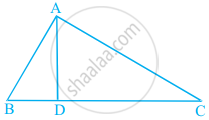Advertisements
Advertisements
Question
All squares are ______.
Options
similar
congruent
Solution
All squares are similar.
Explanation:
All squares are similar because they all have the same angles (90 degrees each), and their sides are proportional to each other, differing only in size.
APPEARS IN
RELATED QUESTIONS
All circles are ______.
Two polygons of the same number of sides are similar, if (a) their corresponding angles are ______ and (b) their corresponding sides are ______. (equal, proportional)
Give two different example of a pair of similar figures.
Give two different examples of pair of Non-similar figures.
State whether the following quadrilaterals are similar or not:

Two triangles are similar, if their corresponding angles are .......... (proportional, equal)
Write the truth value (T/F) of each of the following statement
Any two congruent figures are similar.
Write the truth value (T/F) of each of the following statement
Two polygons are similar if their corresponding angles are proportional.
Write the truth value (T/F) of each of the following statement
Two triangles are similar if their corresponding angles are proportional.
For each of the following statements state whether true(T) or false (F)
any two rectangles are similar
For each of the following statements state whether true(T) or false (F)
if two triangles are similar then their corresponding angles are equal and their corresponding sides are equal
For each of the following statements state whether true(T) or false (F)
The length of the line segment joining the midpoints of any two sides of a triangles is equal to half the length of the third side.
For each of the following statements state whether true(T) or false (F)
In a ΔABC , AB = 6 cm, ∠A = 45° and AC = 8 cm and in a ΔDEF , DF = 9 cm ∠D = 45° and DE= 12 cm then ΔABC ∼ΔDEF
For each of the following statements state whether true(T) or false (F)
the ratio of the perimeter of two similar triangles is the same as the ratio of the their corresponding medians.
ΔPQR is an equilateral triangle with each side of length 2p. If PS ⊥ QR, then PS is equal to ______.
ΔABC is an equilateral A of side a. Its area will be ______.
In a rhombus if d1 = 16 cm, d2 = 12 cm, then the length of the side of the rhombus is ______.
The lengths of the diagonals of a rhombus are 24cm and 32cm, then the length of the altitude of the rhombus is ______.
In Figure, ∠BAC = 90° and AD ⊥ BC. Then, ______.
